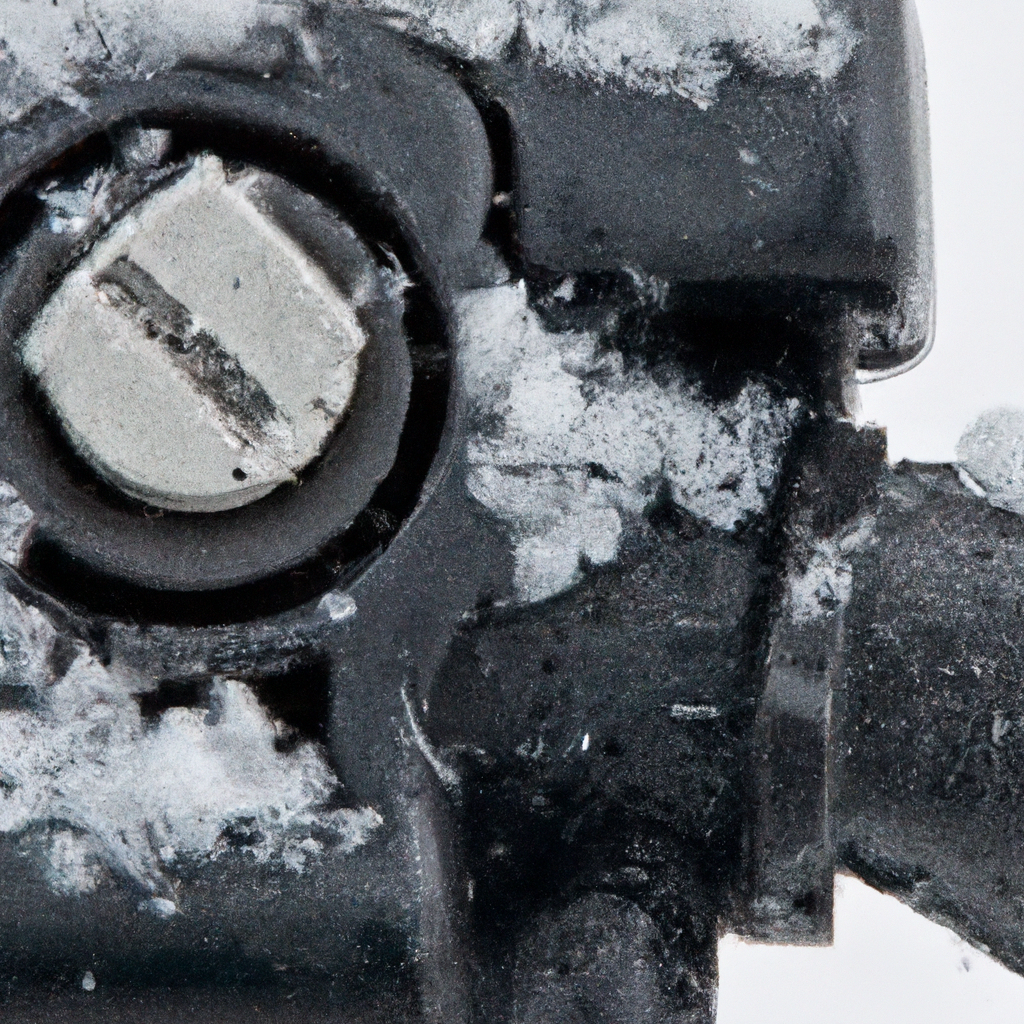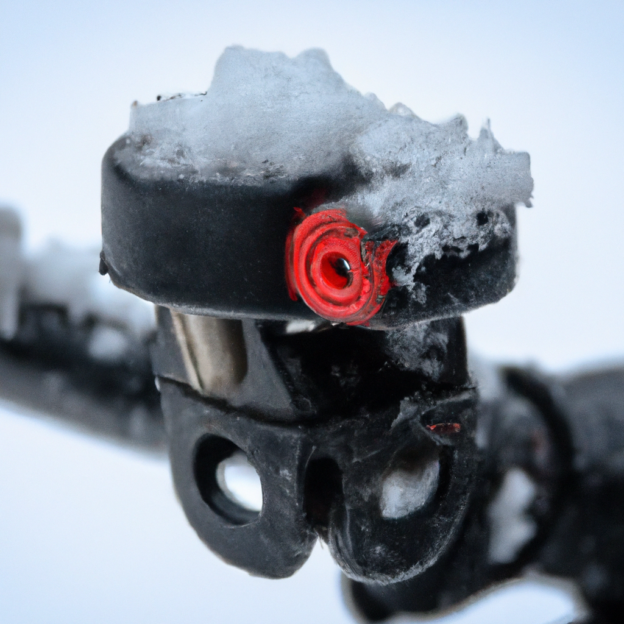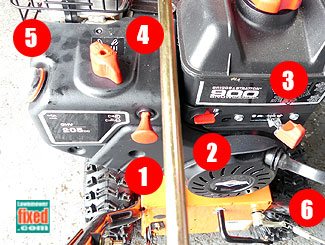So you’ve got your snowblower ready to tackle that mountain of snow in your driveway, but you’re not quite sure what to do with that choke. You may have heard about it before, but you’re not exactly sure what its role is in getting your snowblower up and running. Well, fear not, because we’re here to break it down for you. The choke actually plays a crucial role in starting a snowblower, as it helps to regulate the flow of air and fuel into the engine. By adjusting the choke, you can control the air-to-fuel ratio, ensuring a smooth and efficient start. So, let’s take a closer look at why the choke is an essential component when it comes to firing up your snowblower.

This image is property of pixabay.com.
Understanding the Choke
What is a choke?
A choke is a device that controls the air-to-fuel mixture in the carburetor of a snowblower’s engine. It restricts the airflow to the engine, allowing for a richer fuel mixture to be delivered during the starting process. This is necessary because an excessively lean fuel mixture can make starting the engine difficult, especially in cold weather.
How does a choke work?
When the choke is engaged, it closes off the air intake, reducing the amount of air entering the carburetor. This creates a vacuum effect, causing more fuel to be drawn into the combustion chamber. With a higher concentration of fuel, the engine is able to start more easily. As the engine warms up, the choke gradually opens, allowing more air to enter and restoring the proper air-to-fuel ratio for efficient combustion.
Why is a choke necessary for starting a snowblower?
A choke is necessary for starting a snowblower because cold weather can affect the fuel’s ability to evaporate. In low temperatures, fuel tends to condense, making it difficult to vaporize and ignite in the combustion chamber. By enriching the air-fuel mixture with the help of the choke, the snowblower’s engine gets the added fuel it needs to start and overcome the challenges posed by cold weather.
Effects of Choke Positions
Full choke position
The full choke position completely closes off the air intake, limiting the airflow to the minimum. This results in maximum fuel concentration in the mixture, making it easier to start the engine in extremely cold weather conditions. However, it’s important to remember that using the full choke position for an extended period can lead to a rich fuel mixture, which may cause the engine to bog down or run poorly.
Partial choke position
The partial choke position allows for some airflow to enter the carburetor while still restricting it to some extent. It provides a moderately rich air-fuel mixture, making it suitable for starting the snowblower in mildly cold conditions. The partial choke position strikes a balance between fuel enrichment and maintaining proper engine performance, gradually transitioning the snowblower to regular operation.
No choke position
The no choke position, as the name suggests, opens the air intake completely, allowing for normal airflow into the carburetor. This position is used after the engine has warmed up and stabilized to operating temperature. Once the engine is running smoothly, it is important to switch off the choke to prevent an overly rich fuel mixture, which can lead to poor engine performance and higher fuel consumption.

This image is property of pixabay.com.
Starting Process
Step 1: Verify safety precautions
Before starting the snowblower, it’s important to ensure proper safety precautions. This includes checking for any loose or damaged parts, ensuring the snowblower is on a flat and stable surface, and making sure there are no obstacles in the surrounding area that could cause harm or damage.
Step 2: Set the choke position
Depending on the temperature and starting conditions, set the choke to the appropriate position. In colder temperatures, the full choke position is typically recommended, while the partial choke position may be suitable for milder conditions.
Step 3: Prime the engine
Priming the engine involves delivering a small amount of fuel directly into the carburetor to aid in cold starts. Follow the manufacturer’s instructions to properly prime the engine, which may involve pressing a primer bulb a specific number of times or using a separate priming mechanism.
Step 4: Engage the ignition system
Once the choke is set and the engine is primed, engage the ignition system. This typically involves turning the ignition key to the “start” position or pulling the starter cord. Be sure to follow the manufacturer’s instructions for starting the specific snowblower model.
Step 5: Adjust choke gradually
As the engine starts to run, adjust the choke gradually to allow more air into the carburetor and regulate the air-to-fuel mixture. This prevents the engine from running too rich and ensures optimal performance. Once the engine has warmed up and stabilized, switch off the choke and the snowblower should be ready for operation.
Common Choke-Related Issues
Choke plate obstruction
One common issue is when the choke plate becomes obstructed or stuck due to dirt, debris, or gummed-up fuel. This can prevent the choke from properly engaging or disengaging, leading to difficulties in starting and running the engine. Regular cleaning and maintenance of the choke assembly can help prevent choke plate obstructions.
Choke stuck in a position
Sometimes, the choke can become stuck in a particular position, usually due to corrosion or mechanical issues. This can prevent the choke from being adjusted or switched off, causing the engine to run too rich or lean. A thorough inspection and potential repair or replacement of the choke mechanism may be necessary if it becomes stuck.
Choke not working properly
If the choke is not working properly, it may not provide the necessary fuel enrichment during starting, making it difficult to start the snowblower. This can be due to a faulty choke assembly, damaged choke plate, or other underlying issues. Troubleshooting the choke system, such as cleaning or repairing it, can help resolve the problem.
Choke cable damage
The choke cable connects the choke lever or control knob to the choke assembly, allowing for easy adjustment of the choke position. If the choke cable becomes damaged, frayed, or disconnected, it can impede proper choke operation. Regular inspection of the choke cable and addressing any signs of damage can prevent choke-related issues.

This image is property of pixabay.com.
Maintenance and Troubleshooting
Cleaning the choke assembly
Regularly cleaning the choke assembly is essential for continued proper operation. Remove any dirt, debris, or fuel residue that may have accumulated on the choke plate or inside the carburetor. Using a carburetor cleaner or a small brush can help remove any stubborn build-up. Ensure all components are dry before reassembling.
Inspecting the choke cable
Inspect the choke cable for any signs of damage, such as fraying, corrosion, or loose connections. If any issues are identified, it may be necessary to replace the choke cable. Lubricating the choke cable periodically can help maintain its smooth operation.
Repairing or replacing the choke
If the choke plate, choke assembly, or other choke-related components are damaged or malfunctioning, it may be necessary to repair or replace these parts. Consult the snowblower’s manual or seek assistance from a professional technician to properly address any choke-related issues.
Seeking professional assistance
If troubleshooting and basic maintenance do not resolve choke-related problems, seeking professional assistance is recommended. A qualified technician can diagnose and repair any underlying issues or provide guidance on proper choke maintenance.
Alternative Starting Methods
Using an electric starter
Some snowblowers are equipped with an electric starter, which eliminates the need for manual choke operation. Simply plug in the electric starter, press the start button, and the starter motor will crank the engine to begin the ignition process. This method can be especially convenient for individuals who may have difficulty with manual starting procedures.
Using a primer bulb
Another alternative starting method is using a primer bulb. The primer bulb is typically located on the carburetor and allows for manual fuel priming. By pressing the primer bulb a few times, fuel is forced into the carburetor, aiding in cold starts. This method can be effective in reducing the reliance on the traditional choke system.
Warming up the engine without choke
In certain weather conditions, such as when the engine is already warm or during mild temperatures, it may be possible to start the snowblower without using the choke. This can be done by following the manufacturer’s recommended starting procedure without engaging the choke. However, it’s important to note that using the choke during cold starts is still generally recommended for optimal performance and reliability.

Importance of Choke Control
Ensuring smooth engine operation
Proper choke control plays a crucial role in ensuring smooth engine operation, especially during cold starts. By enriching the air-fuel mixture with the choke, the engine receives the necessary fuel supply to ignite and run smoothly. This helps prevent stalling, sputtering, or other performance issues that can arise from a lean fuel mixture.
Preventing damage to the engine
Using the choke when starting a snowblower helps prevent damage to the engine components. Without the choke, the engine may experience a lean fuel condition, leading to increased heat and potential damage to the piston, cylinder walls, or other internal parts. The choke provides the necessary enriching effect to protect the engine during the starting process.
Optimizing fuel efficiency
Proper choke control optimizes fuel efficiency by ensuring the correct air-to-fuel ratio for combustion. Using the choke in the starting process allows for a richer fuel mixture to be delivered, compensating for the lower evaporative ability of fuel in cold weather. Once the engine warms up and reaches operating temperature, switching off the choke prevents excessive fuel consumption and promotes efficient fuel utilization.
Difference in Choke Design
Manual choke vs. automatic choke
Manual chokes require the user to manually adjust the choke position using a lever, knob, or other control mechanism. This allows for more precise control over the air-to-fuel ratio, especially for individuals who are familiar with their snowblower’s starting requirements. Automatic chokes, on the other hand, adjust the choke position automatically based on the engine’s temperature, requiring less user intervention.
Cable-operated choke vs. lever-operated choke
A cable-operated choke is controlled by a cable that connects to the choke lever or control knob. This allows for remote control of the choke position, providing convenience and ease of adjustment. Lever-operated chokes, on the other hand, have the choke control lever located directly on the carburetor, requiring manual operation in close proximity to the engine.
Older choke systems vs. newer choke systems
Older choke systems may rely on mechanical linkages and manual adjustments. They tend to be more prone to issues such as sticking, corrosion, or wear and tear. Newer choke systems often incorporate more advanced technologies, such as automatic chokes or electronic choke controls, which can improve reliability and ease of operation.

Understanding the Snowblower Engine
Why is a choke required for small engines?
Small engines, such as those found in snowblowers, rely on a precise air-to-fuel mixture for proper combustion. Due to their small size and limited air intake capabilities, they are more sensitive to changes in the ambient temperature and fuel evaporation rates. By using the choke, which enriches the air-fuel mixture, small engines are better equipped to start and run smoothly, especially during cold weather.
How does the choke affect the air-to-fuel ratio?
The choke affects the air-to-fuel ratio by increasing the fuel concentration in the mixture during the starting process. By limiting the intake of air, the choke creates a richer mixture that is easier to ignite in colder temperatures. As the engine warms up, the choke gradually opens, allowing more air to enter and ultimately restoring the proper air-to-fuel ratio for efficient combustion.
Importance of proper air-to-fuel mixture
Maintaining the proper air-to-fuel mixture is crucial for the overall performance and longevity of the snowblower’s engine. A lean mixture, caused by inadequate fuel supply, can result in engine overheating, increased wear on internal components, and poor performance. Conversely, an excessively rich mixture can lead to fouled spark plugs, carbon deposits, and decreased fuel efficiency. The choke helps ensure that the engine receives the appropriate fuel supply for reliable and efficient operation.
Choke Usage in Different Weather Conditions
Cold weather and choke operation
In cold weather, the choke operation becomes particularly important. Cold temperatures hinder fuel evaporation and make starting the engine more challenging. It is recommended to use the full choke position in extremely cold conditions to provide the necessary fuel enrichment for successful starts. Gradually adjusting the choke as the engine warms up helps maintain optimal performance.
Warm weather and choke requirements
In warm weather, the need for choke enrichment is reduced. The fuel evaporation rates are higher, and the engine can typically start more easily without the full choke. In such conditions, starting the engine with the choke in the partial choke position or no choke position may be sufficient to achieve smooth starts and operation.
Humid weather and choke adjustments
Humid weather can affect the density of the air, potentially requiring adjustments to the choke position during the starting process. The level of fuel enrichment needed may vary depending on the humidity level. It’s important to monitor the engine’s performance and adjust the choke as necessary to ensure proper starting and optimal air-to-fuel mixture.






